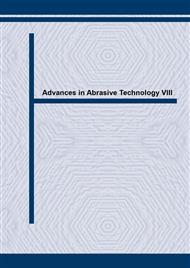p.603
p.609
p.615
p.619
p.625
p.631
p.637
p.643
p.649
A Novel Automatic Feedrate Adjustment Method for Die-Cavity Roughing
Abstract:
Sculptured surface machining is a critical process commonly used in die and mold industries. Since there is a lack of scientific tools in practical process planning stages, feedrates of CNC machining are selected based on previous experiences. In the selection of feedrate, the feedrate is set an individual conservative constant value all along the die cavity roughing processes in order to avoid undesirable results such as chipping, cutter breakage or over-cut due to excessive cutter deflection. Usually, volumetric models or vector force models used for optimizaton of feedrates must be created to get the variable feedrates along the tool path. Considering the die cavity roughing being a 2.5D cutting, a novel cutting force surface model is created based on orthogonal cutting tests to adjust the feedrates. The model is tested by a typical die-cavity roughing, thinning down machining time and balanced cutting-load can be attained. The presented feedrate scheduling characterized by balancing the cutting-loads in die-cavity roughing will be more significative in high speed machining.
Info:
Periodical:
Pages:
625-630
Citation:
Online since:
August 2005
Authors:
Price:
Сopyright:
© 2005 Trans Tech Publications Ltd. All Rights Reserved
Share:
Citation:


